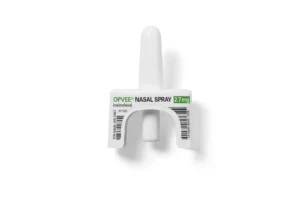To Scott Thomson, changing the culture of policing in America is a relatively simple process. It’s just not an easy one. Thomson led a tumultuous police department makeover in Camden, New Jersey — a poor city of mostly brown and black residents just across the river from Philadelphia — in 2013. After state officials disbanded the old department and started anew, Thomson transformed policing in Camden from the law-and-order, lock-’em-up approach of the 1990s to a holistic, do-no-harm philosophy that’s put the long-maligned city in the spotlight during the national reckoning over race and police brutality. While police elsewhere clashed with Black Lives Matter protesters outraged by the latest death of a black man detained by police, Camden officers marched calmly with residents and activists. “Our actions can accelerate situations. What we should be trying to do is de-escalate them,” said Thomson, a past president of the Police Executive Research Forum who retired from the Camden job last year. “The last thing we want is for the temperature to rise, and for situations to go from bad to worse because of our failed tactics.” But if the recent protest was peaceful, the county takeover of the Camden Police Department was cataclysmic. More than 300 officers lost their jobs. Only half joined the new force. Along with the switch to community policing came a reliance on high-tech, city-wide surveillance, more patrols, and younger, cheaper, less diverse officers who often aren’t from Camden. Their average age today is 26. “That is a very different vision of what a new police force looks like than we’re hearing from protesters, who want less policing,” said Stephen Danley, a professor of public policy at Rutgers University-Camden. ___ Ashly Estevez-Perez, 21, has spent most of her life in Camden, which is now about half Hispanic and 40 percent black. She remembers when children were rarely allowed to leave their front stoops given the threat of gunfire. “The new police force came in, and you saw cars everywhere. … Everyone was kind of taken aback,” she said of what some would call “over-policing.” “Growing up in the city, I don’t see what other alternative works,” said Estevez-Perez, a recent Rutgers-Camden graduate. Activist and entrepreneur Sean Brown, 37, who is black, said the surveillance solves the wrong problem. “If we had economic justice in our community, where anybody who needed a job could get a job, we would be in a different space,” said Brown, who is raising two young sons in the city. Once a busy manufacturing town, Camden in the past few years has added enviable luster to its commercial corridor as generous state tax breaks lured Subaru, American Water and the Philadelphia 76ers (who built a practice facility) to town. They join earlier development that transformed Camden’s downtown and southern waterfront, including a concert venue. The estimated $3 billion in development attracts suburbanites and employs some Camden residents. But locals debate just how many. “I don’t know one person who works in any 76er job, any Holtec (International) job, any Subaru job,” said teachers’ union president Keith Eric Benson. ”Neighborhoods have looked really similar today as they did 10 years ago.” The police changeover followed state budget cuts that had forced Camden to slash municipal services in 2011. Nearly half of its 360 officers were









